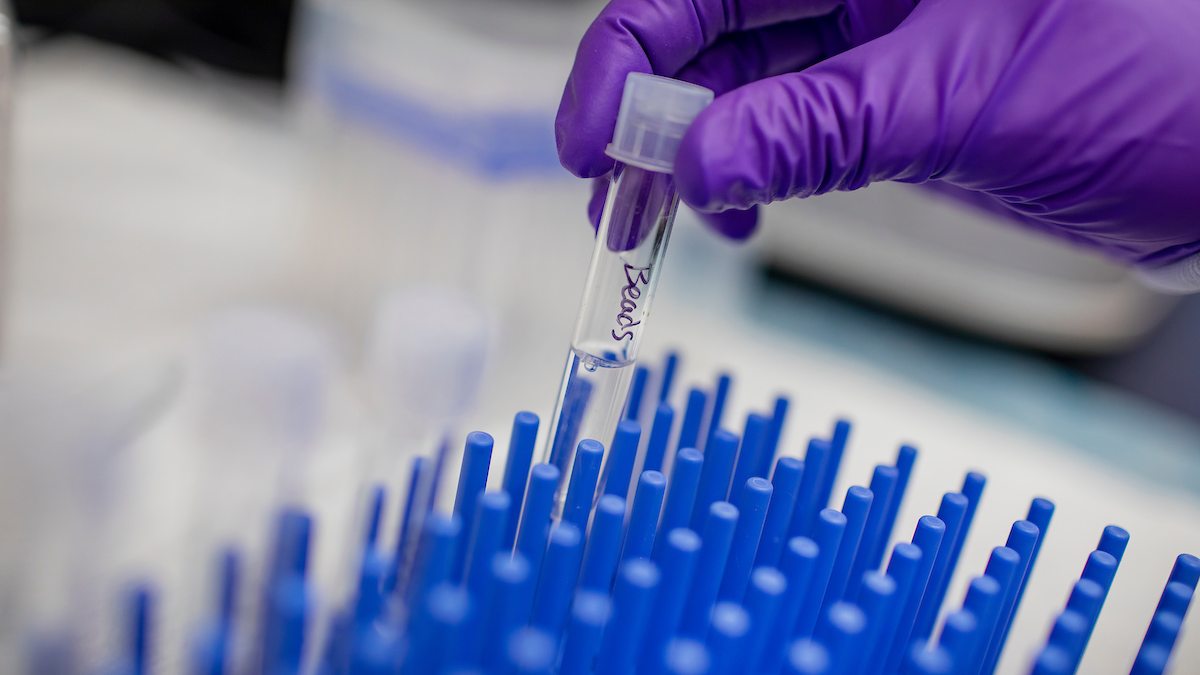Diabetes drug metformin may be a new weapon against HIV
A team led by scientists at the UNC School of Medicine discovered an important vulnerability of the AIDS-causing retrovirus HIV and has shown in preclinical experiments that a widely used diabetes drug, metformin, seems able to exploit this vulnerability.

A team led by scientists at the UNC School of Medicine discovered an important vulnerability of the AIDS-causing retrovirus HIV and has shown in preclinical experiments that a widely used diabetes drug, metformin, seems able to exploit this vulnerability.
The scientists, whose study is published in Nature Immunology, found that HIV, when it infects immune cells called CD4 T cells, helps fuel its own replication by boosting a key process in the cells’ production of chemical energy. They also found that the diabetes drug metformin inhibits the same process and thereby suppresses HIV replication in these cells, in both cell-culture and mouse experiments.
“These findings suggest that metformin and other drugs that reduce T cell metabolism might be useful as adjunct therapies for treating HIV,” said study co-first author Haitao Guo, assistant professor in the UNC Department of Genetics at the UNC School of Medicine.
The co-first author of the study was Qi Wang, postdoctoral research associate. The study’s co-senior authors were Jenny Ting, William R. Kenan, Jr. Distinguished Professor in the Department of Genetics at UNC-Chapel Hill, and Lishan Su, professor of pharmacology at the University of Maryland School of Medicine and formerly of the UNC School of Medicine.
About 38 million people around the world are living with HIV infection, according to the World Health Organization’s most recent estimates. Doctors currently treat these infections with combinations of antiretroviral drugs to suppress HIV replication.
However, many patients despite this treatment show signs of residual viral replication and immune impairment. Even patients who respond well to antiretroviral drugs must take them indefinitely, since HIV inscribes itself into the DNA of some infected cells, and the drugs cannot clear this viral genetic “reservoir.” Moreover, the toxicity of anti-HIV drugs means that many patients can take them only intermittently. Thus, despite progress, there is still much room for improvement in HIV treatment.
A possible new approach to treating HIV is not to attack it directly but to make the cells it infects less hospitable to viral replication. For example, other research showed that HIV boosts CD4 cell energy production, apparently to enhance the virus’s ability to replicate within those cells. Guo and colleagues in their study sought to understand better how HIV does this, and whether reversing this metabolic effect could suppress HIV.
In collaboration with Rafick-Pierre Sekaly and Khader Ghneim at Case Western University, they analyzed CD4-cell gene expression data from a study of HIV-infected people in Africa and Asia and found that the gene-expression patterns most closely related to poor outcomes among these patients involved an energy-production process called oxidative phosphorylation.
They then found that drugs and other chemical compounds that inhibit oxidative phosphorylation in CD4 cells can inhibit HIV’s ability to replicate in these cells. One of these drugs is the diabetes drug metformin, which is one of the world’s most widely prescribed drugs, is considered safe and well-tolerated, and is also inexpensive. Guo and colleagues confirmed with further experiments in primary human CD4 cells, and in mice with human CD4 cells, that metformin suppresses HIV replication in these cells.
The researchers also examined a prior study of HIV patients taking antiretroviral therapy to discover that, after six months of treatment, the patients that had type 2 diabetes – many of whom would have been taking metformin – had on average 33% lower levels of HIV in the blood, compared with non-diabetic patients in the cohort. The diabetic patients also, on average, had higher baseline CD4 cell levels and quicker recoveries of these levels with antiretroviral treatment.
“Those real-world findings are consistent with the idea that metformin has a significant anti-HIV effect,” Ting said.
The scientists ultimately traced HIV’s ability to increase oxidative phosphorylation in CD4 cells to its boosting of the levels of NLRX1, a protein associated with mitochondria – tiny oxygen reactors that help cells produce the chemical energy they need. NLRX1 appears to be a key metabolic switch that HIV uses to enhance its replication in CD4 cells, which in turn makes it a potential target for future HIV treatments.
“This work shows the importance of CD4 cell metabolism in HIV, and suggests that it may be targetable, for example with repurposed drugs such as metformin, to reduce HIV viral load and restore these disease-fighting CD4 cells,” Ting said.
The researchers plan to continue preclinical studies of metformin’s potential as an anti-HIV treatment, conceivably a therapy that could reduce the need for toxic antiretrovirals and could be given to patients earlier to reduce HIV reservoir formation. They note that Canadian researchers, using a very different rationale – that metformin can help preserve CD4 cells by altering the composition of gut bacteria to reduce inflammation and chronic T cell activation – have conducted a clinical trial of metformin in non-diabetic HIV patients, but have not yet published results on its efficacy in improving markers of HIV infection.




